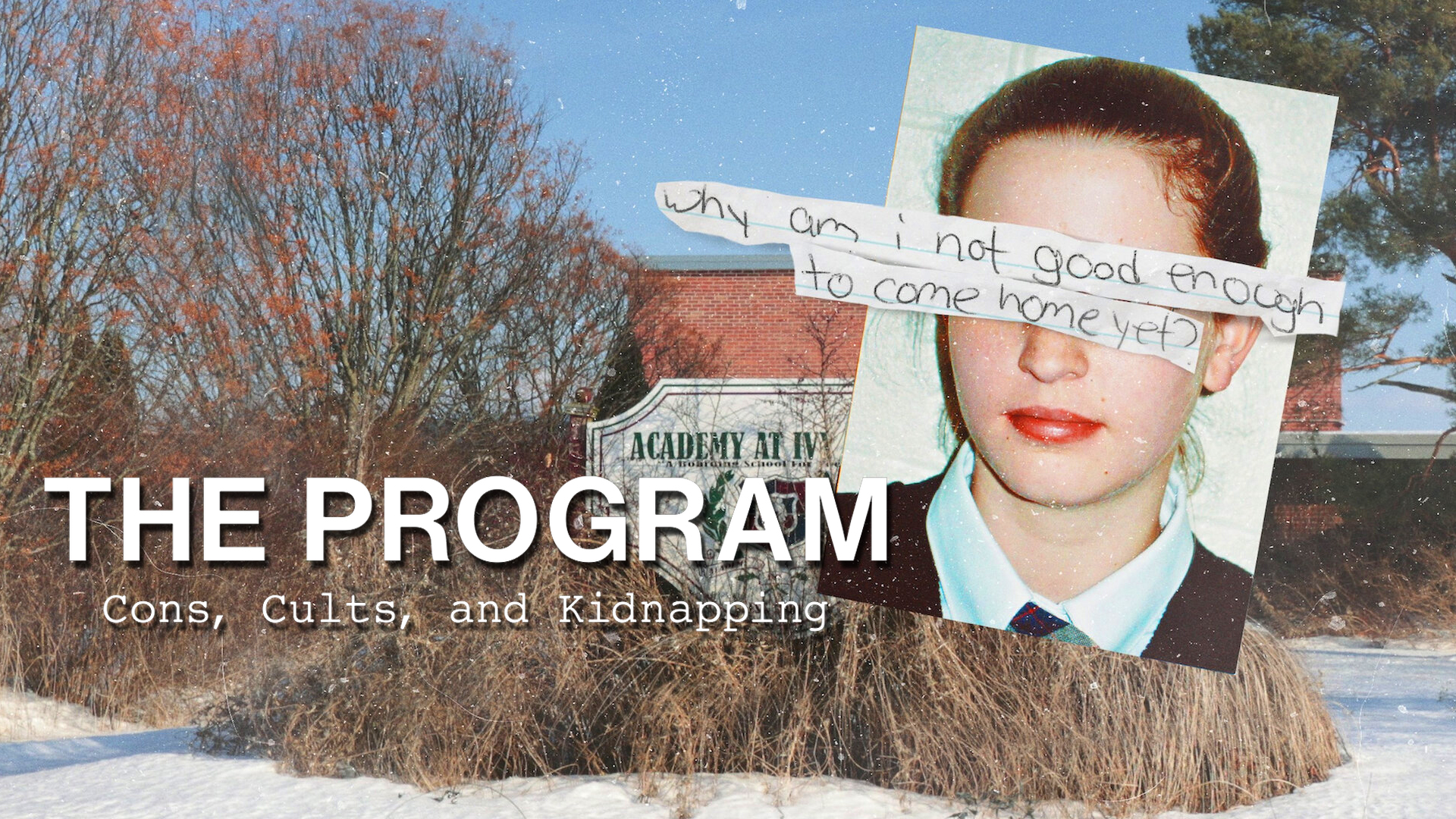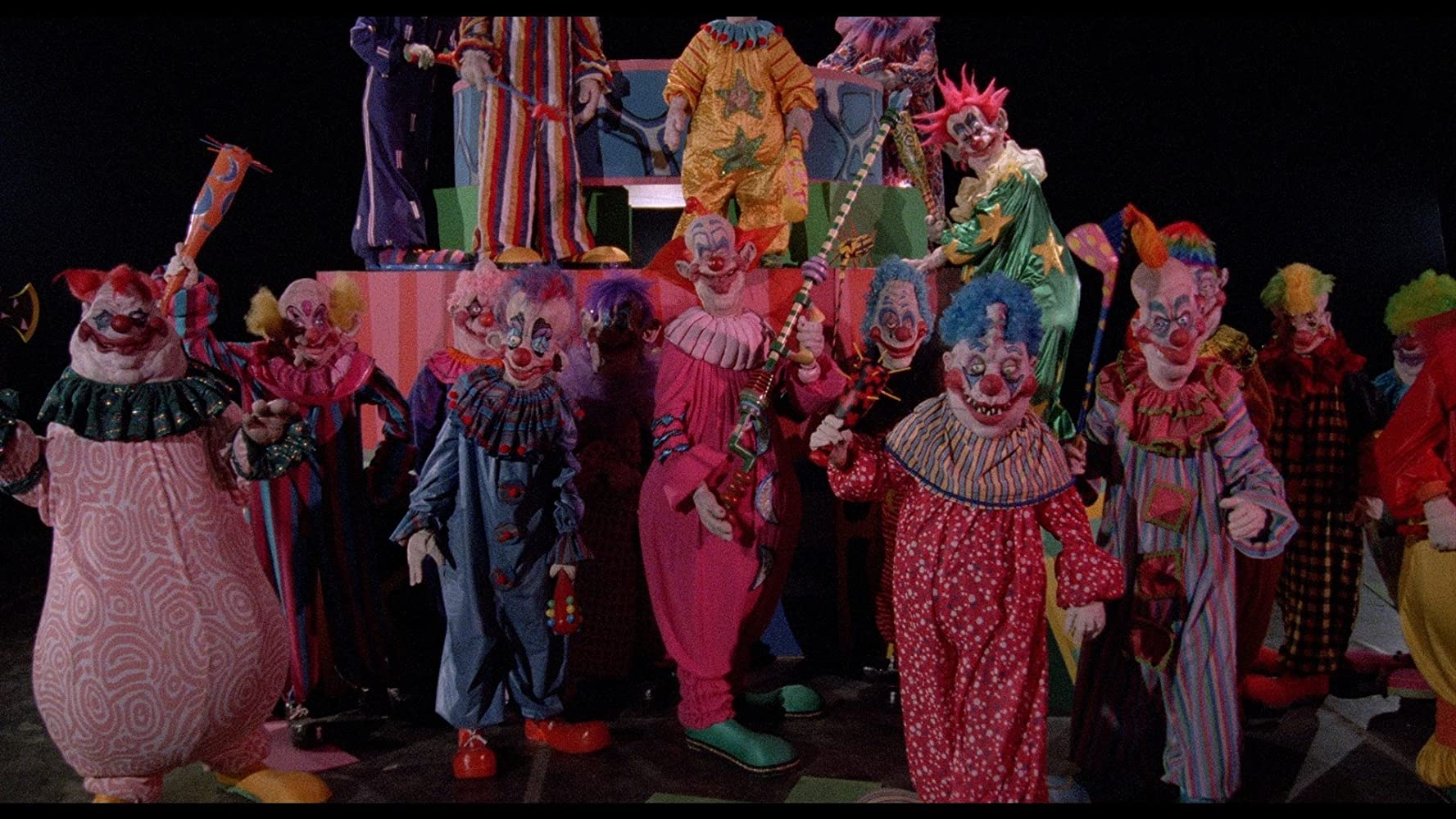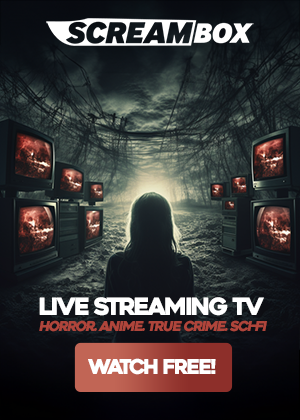Reviews
Netflix’s ‘The Program: Cons, Cults and Kidnapping’ Offers Disturbing Deep Dive into a Destructive Institution [Review]

Katherine Kubler’s harrowing three-part documentary tells a suffocating survivor story that morphs into a terrifying takedown on America’s corrupt behavior modification boarding school business.
“They tried to murder children’s souls here.”
Alexandre Dumas’ The Count of Monte Cristo plays a recurring role as a beacon of escapism in The Program, Netflix’s three-part true-crime documentary, as imprisoned teens struggle to experience any modicum of individuality in a prison-like rehab center. “All human wisdom is contained in these two words – Wait and Hope,” is a moving quote from Dumas’ novel and it’s hard to not transpose this intense message onto the tortured victims of Ivy Ridge Academy as they fight for survival.
The Program unpacks the global epidemic of behavior modification programs that masquerade as boarding schools where parents willingly send their children to these hard-knock rehab centers. This in itself is a refreshing change of pace from the deluge of true-crime content that deconstructs serial killers and cults. Make no mistake, Ivy Ridge Academy and its connected WWASP programs (World Wide Association of Specialty Programs and Schools) are cults, but it’s rare to see such attention paid to behavior modification programs (although Paris Hilton is responsible for an enlightening look into Provo Canyon School in This is Paris), which helps The Program stand apart. It’s thoroughly eye-opening on every level and it’s just devastating that these institutions and “attack schools” exist and are so pervasive.
The Program is directed by Katherine Kubler, a survivor of the docuseries’ infamous Ivy Ridge Academy, who’s the leading voice in this series who’s since gone on to become an editor and now, a director. She makes an incredibly promising directorial debut here and has a real future in documentary filmmaking. This is clearly a deeply personal subject for Kubler, but she adeptly balances the intimate and the international aspects of this story. It should be very interesting to see if Kubler continues to direct, and if so, the types of projects that she takes on. She has an impeccable eye for storytelling.
The Program benefits from its unique point of view where Kubler — alongside fellow former victims — return to an abandoned Ivy Ridge Academy to revisit and relitigate their trauma and collectively heal. The Program juxtaposes this reflection with their life stories and why each of them were sent to the program. The docuseries really benefits through its use of home videos, actual letters that Ivy Ridge “students” wrote to their parents, and professional marketing materials, all of which mesh with documentary footage as the past collides with present. This allows these victims to collectively heal and show how they’re all different, but the same, and have somehow survived this trauma and made it to the other side.
The Program is full of foreboding language like “Hope Buddy” and other heartbreaking terms. The conditions of these programs are inhumane, but it’s equally devastating to see the non-issues that send some of these kids into these various circles of hell. In many cases they’ve done such minor misdemeanors (one of the more haunting examples is Kubler having a Mike’s Hard Lemonade at school), while other Ivy Ridge students didn’t even do anything, but were simply put in this program because it was helpful for their siblings. The human element to The Program becomes its beating heart and is impossible to deny. It’s so powerful, especially with Kubler narrating these stories, in lieu of an outside party or documentarian. It really helps the audience understand and empathize with how this trauma has manifested and compounded in these victims and just shattered them for years, even if they were only at Ivy Ridge for a few weeks or months.
True-crime series of this nature have a tendency to be over-produced and not trust the material to speak for itself. The Program employs a lot of stylistic flair (eerie music and needle drops from Chromatics are low-key the secret weapon here and add such atmosphere to the story), but never to the point that it becomes a distraction that breaks the documentary’s immersion. There are also some more stylized sequences, like a 16-bit video game recreation of Ivy Ridge’s trauma, that helps creatively make its points and keeps things moving along. These flourishes never feel obtrusive or disrespectful. If anything, they only add to the narrative’s unique nature.
Beyond simply retelling stories, which is already brutal, The Program incorporates actual security camera footage so audiences can comprehend just how badly everyone was abused and the unreasonable standards that Ivy Ridge alumni were being held up to. There is also an abundance of shots that highlight Ivy Ridge’s terrifying graffiti and the building’s traumatic disarray that truly makes it look like a haunted house. The Program figures out how to mix the horrors with heart in a way that makes it feel helpful and educational rather than exploitative.
Interviews with Ivy Ridge instructors and the parents of students provide enlightening insight into the people behind these evil roles and The Program tries to make sense of the why and how of it all. It’s more terrifying to learn that these are real people and not just evil souls who are easy to vilify. The Program also highlights how these parents are subjected to their own mind control seminars and are equally put through the wringer to perpetuate this awful cycle. It horribly highlights how deep these WWASP seminars run and why it’s so difficult to escape because of all the layers of this manipulation. The whole system is toxic and it’s so much more than simply kids who are trapped; it’s entire generations who are being chewed up by an established institution that’s too big to topple. Some of The Program’s most emotional moments are instances where Ivy Ridge survivors need to de-program their parents so that they realize the horrors of what they’ve done and the damage that they’ve caused to their kids, which is just as tragic as the actual abuse. Some kids get out, but their parents are still lost in denial.
The Program’s human element is present through the entire docuseries, but the narrative expands into the larger conspiracy behind the people and corporations that fund WWASP programs and how such things like this could exist in the first place. The Program’s second episode moves from the trauma and setup into the mind control, cult aspect, and the struggles of reintegration into society. The third and final entry segues into the program’s takedown, how it was able to operate freely for so long, and who is at the top of this problematic pyramid of pain and legal conspiracy. The docuseries evolves from personal stories to a scathing indictment of America and how children are treated like tokens that the federal government can use to make billions of dollars off of. It’s a federal issue that continues to fester.
Another prevalent issue with these modern true-crime docuseries is that they overextend themselves and can’t sustain their bloated episode counts. Three episodes is exactly the right length for The Program without padding this story and drawing things out. Each episode focuses on a distinct aspect and justifies its ballooning scope. It’s a successful structure for this story rather than The Program being a singular film that’s forced to condense all of this down.
Katherine Kubler’s The Program is dark and painful, but also oddly uplifting, cathartic, and inspirational. The last episode’s final act is genuinely beautiful and therapeutic. It’s a strong reminder of the power of true-crime storytelling and how the medium can educate and heal as much as it entertains. The Program isn’t going to erase WWASP programs, but if it can prevent a single family from entering into one of these institutions then it’s served its purpose and justified its uncomfortable examination of one of society’s ugliest oversights.
‘The Program: Cons, Cults and Kidnapping’ is now available to stream on Netflix.


Home Video
‘Killer Klowns from Outer Space’ 4K Review – It’s Time to Upgrade This Movie One More Time

Scream Factory has just released Killer Klowns from Outer Space in 4K to celebrate its 35th Anniversary, and what an exciting time to be a fan of the 1980s movie. With the recent surge of Klownapalooza happening in the past few years, including tons of merch made available by Spirit Halloween and the much-anticipated video game scheduled to be released next month, it seems apropos for the Klowns to finally make their 4K debut.
In 1988, the Chiodo Brothers (consisting of siblings Stephen, Charles and Edward) took their seemingly ridiculous premise of having otherworldly monsters in the form of circus clowns land on Earth to wreak havoc on a quiet little town and produced it into a full-length motion picture. Inspired by creature features and B-movies alike, their unconventional film with a deliberately hokey title would garner an initially significant following that evolved into a major cult classic close to four decades later.
In Killer Klowns, After seeing what they perceive to be a comet crash down in the woods, Mike (Grant Cramer, Hardbodies, New Year’s Evil) and Debbie (Suzanne Snyder, Weird Science, Return of the Living Dead Part 2) investigate, only to find a totally misplaced Big Top circus tent with some high-tech interior décor and loads of cotton candy. It all seems like a fun time for all, until Mike discovers that the cotton candy contains the bloody corpses of local townsfolk.
The couple seek help from the local police, who of course do not believe their whacky tale. It doesn’t help that the officers include the grumpy Curtis Mooney (played by the late John Vernon in a role almost as memorable as the Dean he portrayed in Animal House) and Debbie’s ex, Dave Hanson (John Allen Nelson, former Baywatch hunk). Hanson is more receptive to their accusations, because he still has a huge soft spot for Debbie, but also has some serious ill will towards Mike for being his replacement. This dynamic is understandably super awkward and a nice little subplot to get you to care about those characters, because who doesn’t enjoy a nice little love triangle. On the flip side, Mooney believes it is only a promotional stunt by Mike’s BFFs, the offbeat Terenzi Brothers (Michael S. Siegel and Peter Licassi), who sell ice cream out of their truck adorned with a giant clown head.

Soon the Klowns get down on the town and start their reign of terror. Will they take over the planet and turn it into one giant cotton candy cocoon? Will Dave win Debbie back or just pummel Mike to let his aggression out? Will the Terenzi Brothers score with the ladies without needing to bribe them with unlimited ice cream? Will Mooney ever crack a smile? All these questions and more are answered in the 88-minute running time.
The Chiodo Brothers created a bizarre yet beautiful carnival of creativity with the Killer Klowns universe that is a major part of the film’s appeal and hardcore fanbase. Let’s start with the Klown headliners— Jumbo, Fatso, Shorty (my boo), Rudy, Spikey, Slim, Bibbo, and Chubby. They are all great villains, vastly unique in look, personality, and weaponry. And that weaponry dreamt up by the Chiodo Brothers is as innovative as the Klowns themselves. The Klowns hunt their prey with cotton candy cocoon guns, flesh-eating popcorn, lethal shadow puppetry, super-sized mallets, animated balloon animals, and boxing gloves with some serious extra “pop.” And if you haven’t seen the film and you think those gadgets sound cool, well they are even more awesome to see in action. Even if the special effects are from the ’80s.
All this talk about extraterrestrial clowns and circus weaponry can easily overshadow our human stars. Kramer, Snyder, Nelson, and Mooney are all fantastic as the leads, playing their parts perfectly. And then there are appearances by veteran actor Royal Dano (Ghoulies 2) and Christopher Titus (Titus), well before his popularity hit its stride.

Now I am sure you are wondering how Scream Factory did with the transfer, and you will be pleased to know that they did an awesome job. The picture is absolutely gorgeous and quite a step up from the previous Blu-ray release. Considering that legacy Blu-ray looked pretty good, you can imagine how great the Dolby Vision is for this 4K presentation. Wish the audio was Dolby Atmos instead of DTS, but not a deal breaker by any means because the sound is fine.
The 4K also comes with a Blu-ray that houses the bonus features. There are not a ton of extras, but the ones they have are very interesting, even if previously released: a making-of featurette, an SFX featurette and a featurette dedicated to the film’s score. There are also deleted scenes, bloopers, audio commentary with the Chiodo Brothers, Easter Eggs, and more.
If you are ready to open your wallet and grab a copy, there are a few editions to choose from. You can either grab the standard edition, the deluxe edition that includes an exclusive slipcover, two posters and a Prism sticker, or the limited edition SteelBook—which this review is based on.
You can order one of these versions now at shoutfactory.com.














You must be logged in to post a comment.